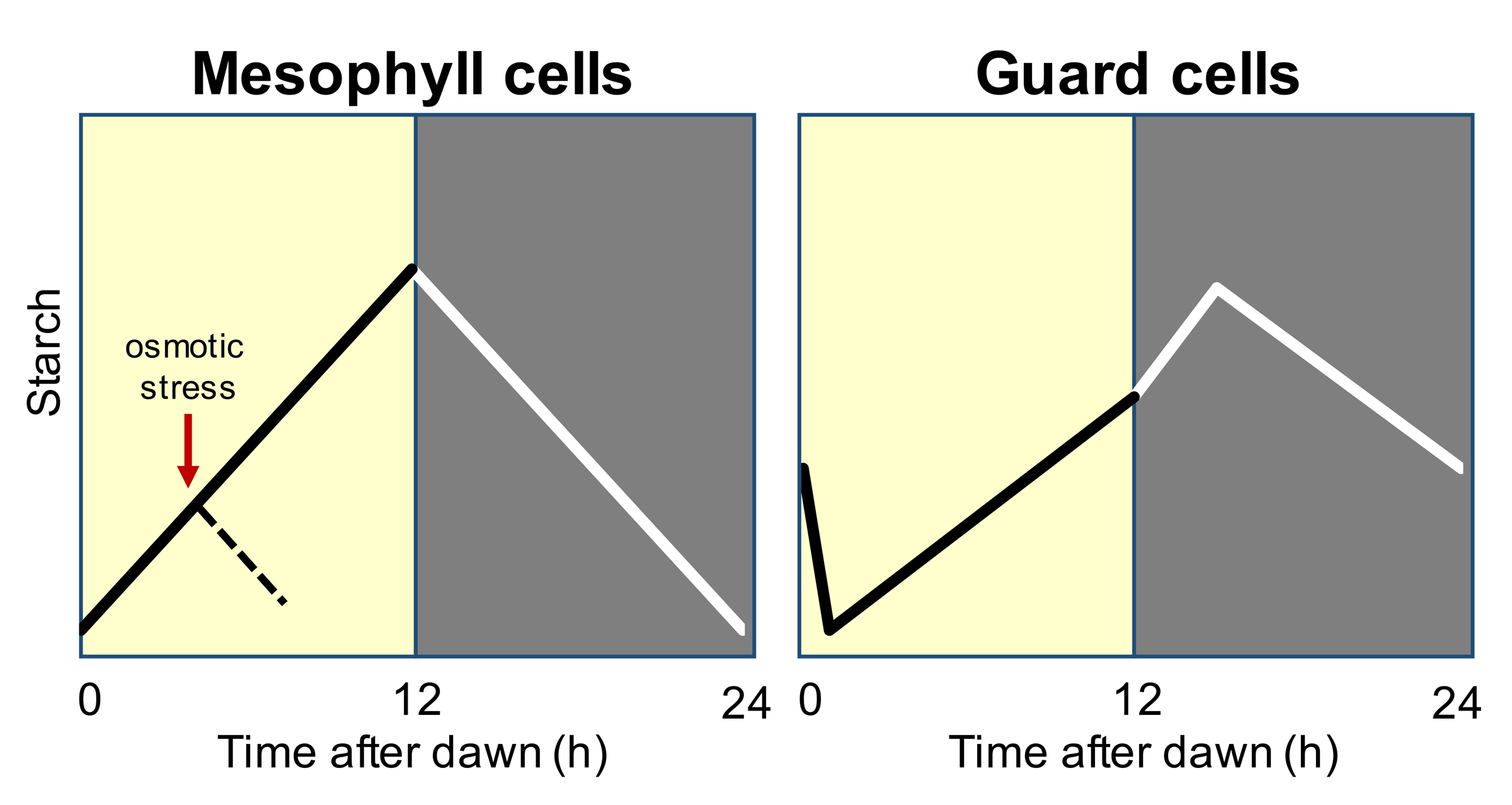Plant Molecular Physiology
The Santelia lab investigates how carbohydrates and their derivatives influence plant growth and survival in response to changes in the surrounding environment, such as the availability of light and water.
Carbohydrates are a class of organic molecules containing atoms of carbon (C), hydrogen (H), and oxygen (O) with the general formula Cx(H2O)y. Carbohydrates are probably the most abundant and widespread organic compounds in nature which are formed by green plants from carbon dioxide (CO2) and water (H2O) during the process of photosynthesis. Carbohydrates serve as energy sources for metabolic activities and as essential cellular structural components. There exists a huge variety of carbohydrates in plants, ranging from simple soluble sugars, such as glucose, fructose and sucrose, to the more complex structural and energy-reserve polysaccharides cellulose and starch.
Starch is the major plant storage carbohydrate found inside plastids of both photosynthetic and non-photosynthetic cells. The paradigm for leaf mesophyll starch is that it accumulates gradually during the day and is degraded at night to support metabolism when photosynthesis is not active (Figure 1). However, my group’s research in the last few years demonstrated that starch metabolism is very dynamic, has cell type-specific features and is intimately integrated with many biological processes.
During abiotic stress, such as short-term osmotic stress, starch in leaf mesophyll cells is degraded during the day when synthesis would normally be expected (Figure 1). Stress-induced starch degradation provides substrates for the synthesis of soluble sugars and other osmoprotectants (e.g. proline), for free radical scavengers, for signaling molecules and also serves as a source of energy to mediate the plant’s stress responses.
In guard cells, which border the stomatal pores on the leaf epidermis controlling CO2 and H2O exchange with the environment, starch dynamics and function differ markedly from the rest of the leaf. In Arabidopsis thaliana guard cells, starch is fully mobilized within minutes upon transition to light and yields glucose needed to promote rapid changes in guard cell turgor and thereby open the stomatal pores for photosynthesis (Figure 1).
Such extraordinary plasticity of starch metabolic dynamics and functions is underpinned by complex regulatory and cellular signaling pathways (e.g. abscisic acid (ABA) signaling, light signaling), the details of which we are just beginning to uncover.
Our overarching research aim is to identify the molecular mechanisms controlling starch turnover in the photosynthetic cells of green leaves (i.e. mesophyll and guard cells), where starch plays multiple functions promoting plant growth and tolerance to abiotic stress.
We combine the strength of traditional forward and reverse genetics with an array of biochemical, molecular and physiological approaches together with multiple, correlated forms of microscopic imaging. We use the model plant Arabidopsis as the main working system - a species for which we have an extensive mutant collection. More recently, we have begun to translate our finding into the economically relevant crops barley and tomato as a proof-of-concept for future improvement programs of crop yield, water use efficiency and stress tolerance.
Specific topics we are interested in:
Carbohydrate metabolism in stomatal guard cells
- Impact of guard cell starch turnover on stomatal opening kinetics
- Integration of guard cell starch metabolism with membrane ion transport and signaling
- Genome-wide association study of Arabidopsis guard cell starch metabolism
- Regulation of guard cell starch degradation by post-translational modification of the glucan hydrolases β-amylase 1 (BAM1) and α-amylase 3 (AMY3)
- Identification of carbon sources, molecular pathway and regulation of guard cell starch biosynthesis
- Impact of guard cell starch biosynthesis on stomatal movements
- Impact of sugar transport to guard cells on stomatal movements
- Role of guard cell photosynthesis in stomatal function
- Functional link between mesophyll and guard cell carbohydrate metabolism
Carbohydrate metabolism in response to abiotic stress
- Transcriptional regulatory networks of leaf starch turnover under abiotic stress
- Circadian control of osmotic stress-induced starch degradation
- Mechanisms of carbon partitioning during osmotic stress
Looking for a Bachelor or Master Thesis project? Bachelor and Master Thesis
Interested in joining our group as PhD student or post-doctoral fellow? Contact me at

